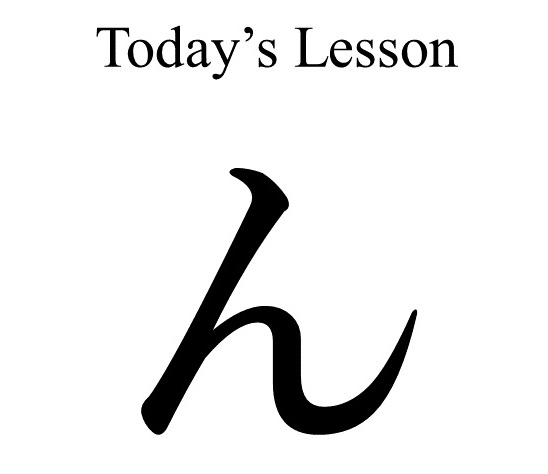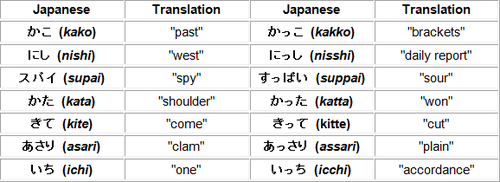Thus the word Engrish 3. This must always be a consonant sound and usually a hard unvoiced or half-voiced sound k s t p.

Additional Sounds Learn Japanese
When written in romaji the small tsu is instead written as a double letter.

. 川 kawa River. It would probably be converted to supuun スフー. If Japanese is your first language you may be using a Japanese sound system when you speak English.
Some words like in Japanese do not describe actual animal sounds nature emotional feelings or movements. Sh is used mostly at word borders in syllables. Clang a loud metallic sound.
Chinese words are only one or two syllables and they can use a character for each syllable but Japanese words frequently have many syllables especially inflected words. 魚 sakana Fish. This is a central concept in Japanese aesthetics which comes from Buddhist teachings on the transient nature of life.
Japanese has fewer vowels with very regular lengths but. While no single letter ends in a consonant sound except ん Japanese does have a way to carry over the next consonant sound back. Its due to Japaneses syllable structure.
There are many many sounds not present in the japanese language. But they would add a vowel sound between the s and p. Hard Consonant Sounds.
Clank a short loud sound. As seen in the following short list of words Japanese uses the sounds s and. Answer 1 of 2.
The consonant f has a softer sound for instance. ɹ l w j m n and. So this Japanese phrase refers.
The other English consonants are all voiced. Furthermore subtle variations are made in Japanese onomatopoeia words. Both a flower in the mirror and a moons reflection on water cant be touched.
Tofu tohh-foo bean curd. Basic Japanese Nature Words. The phonology of Japanese features about 15 consonant phonemes the cross-linguistically typical five-vowel system of a i u e o and a relatively simple phonotactic.
It doesnt have anything to do with their writing. Clack -to make a short loud sound like one hard object hitting against another. I Describe how the two fricatives s and are distributed.
As with any language So I will start with what there are and we will move forward from there. The double combination of consonants is really hard in the beginning but then learners can pronounce them very well for example the combination of ts in Tsunami Tidal wave or Tsuki the moon. H is voicess and has no voiced counterpart.
The reason is that Japanese has a relatively simple syllable structure of CVN. 山 yama Mountain. Its also not unusual to find both.
What that means is that a syllable consists of an optional. Voiced sounds are never preceded by a soku-on in native Japanese words but the consonants of unvoiced combination syllables can be ex. 鏡花水月 Flower in the mirror.
雨 ame - Rain. English allows some spectacularly complicated syllables strengths being a good maximal example but Japanese doesnt - its allowed syllable. In the Japanese language r and l are variations of the same sound actually so trying to make them completely distinct in English is very difficult.
Spoon ends in an n sound so they wouldnt add a vowel sound at the end. Youll better understand this once youve learned the five classifications of Japanese onomatopoeia which well go over below. The other sounds of English do not come in voicedvoiceless pairs.
Wabi-sabi 侘寂 Wabi-sabi means imperfect or incomplete beauty. So for example the word for man is hito which is the simple combination of hi and to and the word katakana can readily be broken up into four syllables. 花 hana Flower.
Clash a loud metallic sound. Basic Japanese Words for Saying. 空 sora - Sky.

Japanese Consonants How To Pronounce ん

Hiragana Double Consonants And Long Vowels Youtube Double Consonants Long Vowels Vowel

Https Media Moddb Com Images Groups 1 11 10968 Hk Katakana Img01 Gif In 2022 Learn Katakana Alphabet Charts Learn Japanese

0 Comments